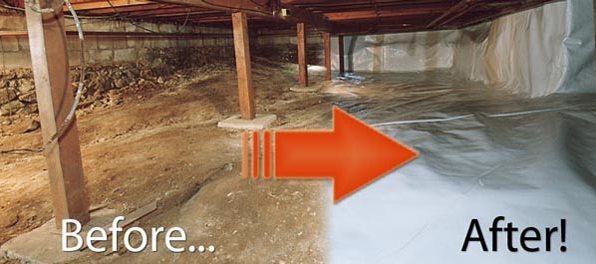You know your crawl space – the low-ceiling place between the first floor and the ground where you have to crawl around on your hands and knees. It’s where your plumber and furnace guys go when something HVAC-related needs service. And it’s not a place you like to go.
But maintaining your crawl space is super important. A well-maintained crawl space will save you money, avoid expensive damage to your house, and guard against mold – a severe health risk. So what goes into a well-maintained crawl space? Let’s take a look.
What is a Crawl Space?
If you wondered, a crawl space is an area between the first floor and the ground, and by definition, it’s less than standing height. Today, most crawl spaces have poured concrete floors and walls and are the entry points for HVAC services to the rest of the house.
And Crawl Space Maintenance?
Signs of crawl space failure can often go unnoticed, so it’s important to be vigilant. Issues like musty odors, sagging floors, or visible mold are all indicators that your crawl space may need attention. Early detection and proper maintenance can prevent these problems from escalating, ensuring your home remains safe and structurally sound. Good maintenance for your crawl space means keeping it dry, clean, and sealed. Do those things, and you’ll be in great shape.
Let’s see what’s involved in each of those two categories.
Keeping It Dry
Crawl space encapsulation plays a crucial role in keeping your crawl space dry. By sealing off the area with a durable vapor barrier, you prevent moisture from seeping in, which is essential for maintaining a healthy and energy-efficient home.
Crawl space waterproofing adds an extra layer of protection, ensuring your crawl space remains dry even in the most challenging conditions. This approach diverts water away from the foundation, preventing future moisture-related issues, such as mold, mildew, and structural damage.
Proper encapsulation not only protects the foundation but also helps in controlling the humidity levels, significantly reducing the risk of mold and structural damage. Crawl space encapsulation with a durable vapor barrier seals the area from the outside and protects the foundation. Once you’ve done that, make sure your crawl space insulation is up to snuff. A properly insulated and sealed crawl space is a big energy saver.
Installing a dehumidifier is a great idea. Not only because the drier your crawl space, the better, but it’s the best protection against mold. Even over short periods, excess moisture can lead to structural damage and, worse, mold.
Should you have a sump pump in crawl space? If you ever have any standing water or puddles, the answer is yes. Dehumidifiers aren’t designed and can’t remove water puddling on the floor – only a sump pump will.
Another reason to install a sump pump is if you live in an area where the water table rises or occasionally flooding occurs. It may not have happened recently, but it might. Better prepared than sorry.
Cleaning and Sealing Your Crawl Space
Once you’ve got your crawl space nice and dry, clean it, and keep it that way! Dirt and litter attract moisture – and moisture attracts insects and four-legged critters. So clean, right?
The next step is sealing any areas or cracks – even the smallest ones – against bugs and rodents. Spray foam and crack sealant are your friends in the sealing process, plus they are good insulation.
Bugs are bad enough, but mice, squirrels, or worse are capable of causing severe – and expensive to repair – damage to electrical wiring and insulation.
Love your Crawl Space
Now that you’ve given your crawl space all the love it needs, you’re on easy street. You’ll be saving money on energy costs. And you won’t have to worry about mold or structural damage. Of course, you’ll need to give it a cleaning once in a while. But that’s not so bad.
For more informative and entertaining articles, please look around the rest of our website!

